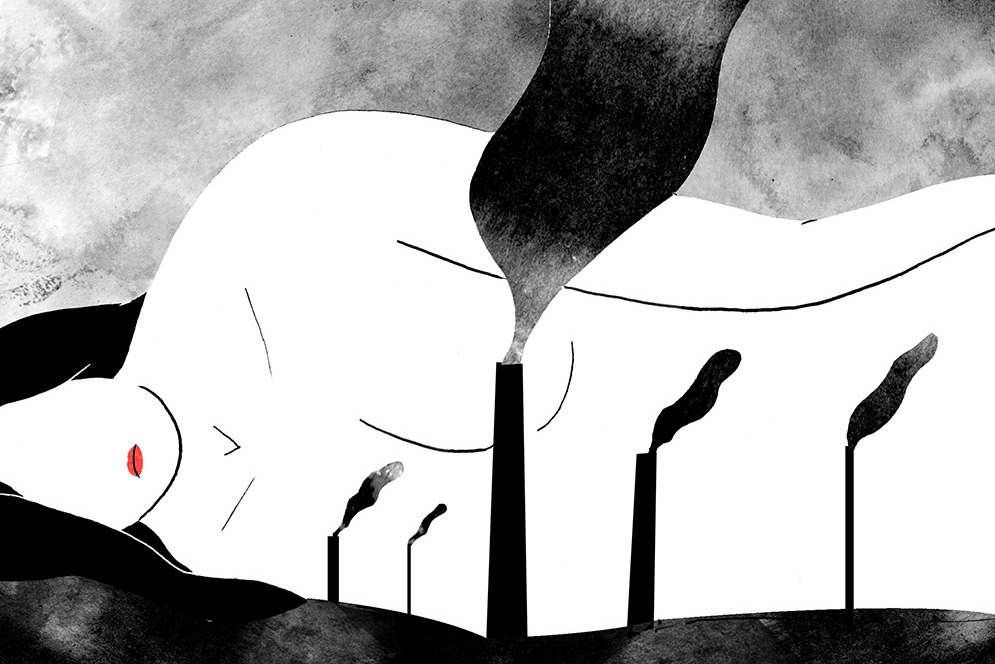Grow. Spread. Don’t die.
This is a cancer cell’s purpose. To achieve it, cancers are endlessly inventive, hijacking healthy cells’ essential systems in a grotesque parody of normal biology. And through the new chemicals we are putting into the environment, we are helping them do it. We just don’t quite know how.
“Some 60 percent to 70 percent of cancers are related to environmental exposure of some kind,” says David Sherr, a School of Public Health professor of environmental health, who studies links between environmental chemicals, especially dioxins, and breast cancer. Figuring out the exact fraction of breast cancers triggered by environmental chemicals is difficult and controversial. But biologists have found the “fingerprints” of some chemicals in the DNA of human breast tumors, and epidemiologists have linked chemical exposure with higher odds of developing breast cancer. Breasts may be especially susceptible to environmental exposures, because chemicals can accumulate in their fatty tissue.
“You can think of it as a potential chemical depot,” says Sherr, who is also a School of Medicine professor of pathology and laboratory medicine, adding that when lab rats are exposed to certain kinds of pollutants, the cancer they develop is primarily breast cancer. (The breasts aren’t the only part of the body that are sensitive to environmental chemicals: the liver, for example, which helps clear harmful substances from the bloodstream, is also especially vulnerable, as the lungs are to smoking and air pollution.)
“Professor Sherr has been a consistent and clear voice about the role of chemicals in producing cancer, guiding us towards potential opportunities for prevention,” says Sandro Galea, Robert A. Knox Professor and dean of SPH. “He is a basic scientist who is always concerned about the applications of his work.”
To Sherr, environmental chemicals are both a problem and, perhaps, the path to a solution. Their biological potency provides him and his team a novel understanding of the signaling pathways that go haywire in cancer. He hopes that his work on understanding environmental toxins, supported by grants from the Art beCAUSE Breast Cancer Foundation and the National Institute of Environmental Health Sciences’ Superfund Research Program, might lead to new cancer treatments, especially for so-called triple-negative breast cancers, which tend to be very aggressive and don’t respond to hormone-blocking drugs.
“Triple-negative breast cancer right now is a black box,” says David Farb, a MED professor and chair of pharmacology and experimental therapeutics. It doesn’t have any of the three growth-controlling receptors that doctors know how to target with drugs (hence the name triple-negative), so oncologists typically fight it with some combination of surgery, chemotherapy, and radiation. Farb hopes that Sherr’s work can uncover new targets, so drugs can selectively target triple-negative breast cancer with fewer side effects.
Read the full story on BU Today














































Related Stories
New Consortium to Study Environmental Causes of Breast Cancer
SPH’s Sherr to lead research involving labs at BU and Tufts
Zebrafish Cancer Genetics Illuminate Human Breast Cancers
MED’s Hui Feng focuses on MYC gene
Too Many Black Women Die from Breast Cancer. Why?
BU Slone Epidemiology Center researchers look for answers
Post Your Comment